
Fast, affordable Internet access for all.
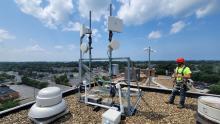
Cleveland, Ohio is putting the finishing touches on an ambitious plan to build a citywide open access fiber network–and deliver affordable fixed wireless service–at minimal cost to city residents. The double-edged proposal aims to bring both meaningful broadband competition–and lower rates–to the long neglected city of 1.7 million people.
Last month, the city announced it had awarded $20 million in ARPA (American Rescue Plan Act) funds to Cleveland-based digital equity non-profit DigitalC. Under the proposal, DigitalC will spend 18 months building a fixed wireless broadband network capable of providing locals with symmetrical 100 Megabit per second (Mbps) service for $18 a month.
DigitalC’s fixed wireless service, EmpowerCLE+, launched in 2018 and accelerated its deployment in 2020 to meet the needs of frustrated parents and workers during peak COVID.
Speaking at ILSR’s and the National Digital Inclusion Alliance (NDIA) Building for Digital Equity (B4DE) event last week, DigitalC CEO Joshua Edmonds noted that the EmpowerCLE+ network currently passes 23,500 households in Cleveland, with 2,300 current subscribers. The city’s new agreement with the city should expand the network’s potential reach to 99.9% of homes in Cleveland.
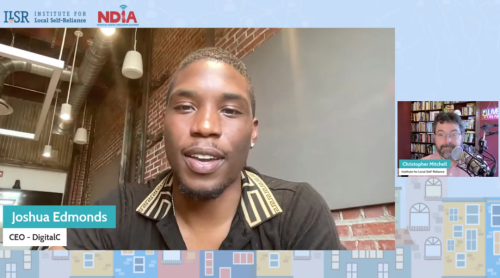
“We're thankful for the opportunity and we're just really hoping that people use this as motivation to change things within their respective markets,” Edmonds told ILSR in a phone interview.
In addition to the symmetrical 100 Mbps $18 a month option, DigitalC says they’ll also provide users access to 300 Mbps service for $30 a month, and a gigabyte per second service for $50 a month. The organization also plans to provide digital skills training to around 50,000 Cleveland residents within the next four years.
“This is a major victory, and I hope that people don't look at it as just a major victory for Cleveland,” Edmonds said. “Every city where there's a prevalent digital divide, where there's political will and ability to execute, people should be paying close attention to what happens in Cleveland, paying close attention to how DigitalC was able to fight and navigate with our coalition of stakeholders.”
With ‘Floor and Ceiling Strategy,’ City Is Also Pursuing An Open Access Fiber Network
In addition to the partnership with DigitalC, Cleveland city leaders passed an ordinance in late September to encourage investment from a private New Jersey-based telecom provider, SiFi Networks. As part of this arrangement, SiFi will spend 7 years building a $500 million citywide open access fiber network at no cost to taxpayers, paid off by leasing access to the network to other ISPs. SiFi has announced many deals with numerous cities but most of them have not broken ground to our knowledge.
Austin Davis, a Senior Policy Advisor to Mayor Bibb, told ILSR the two-pronged approach aims to deliver affordable access more immediately through DigitalC, and robust infrastructure-based competition over the longer haul with SiFi.
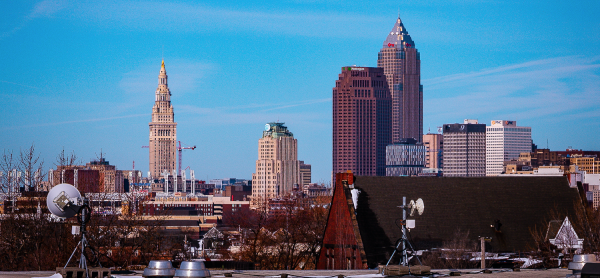
“This is our floor and ceiling strategy,” Davis said. “We’re raising the floor for minimum speeds and price with DigitalC, and we’re raising the ceiling for maximum speeds, technology, and market-rate competition with SiFi. Neither firm alone could do it all, so we’re doing both.”
After DigitalC tackles more immediate affordability needs with the fixed wireless option, SiFi’s $500 million open access network will invite ISPs to compete in layers. Data routinely indicates that such open access fiber networks help lower the cost of market entry for ISPs to boost competition, resulting in better quality service at lower cost to locals.
“We can’t ask our residents to wait 7 years for a solution, especially when we are facing a genuine crisis today, with one third of our residents presently lacking at-home broadband connections,” he noted. “We’re really excited about the one-two punch here.”
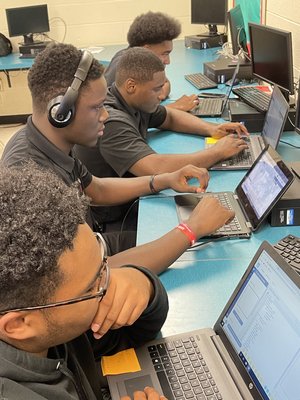
“What attracted us to Cleveland is the lack of investment,” SiFi President Scott Bradshaw said at a recent city council meeting. “We cannot put our finger on why, what we can do though is help you and we want to help you at no cost to you.”
A Long History Of Monopoly Neglect And Digital Redlining
The reason why Cleveland remains disconnected in the year 2023 is actually very clear: consolidated monopoly power and an overall lack of broadband competition in the city has resulted in high prices, spotty coverage, slow speeds, stagnant investment, and statistically some of the worst customer service in any industry in America.
Most of Cleveland consists of a monopoly or duopoly consisting of Charter (Spectrum) and AT&T, the latter of which has a long history of failing to upgrade aging DSL networks to fiber.

Back in 2019, the National Digital Inclusion Alliance (NDIA) ranked Cleveland as the worst-connected city in the United States (with more than 100,000 households). At that time, roughly 30 percent of Cleveland households had no broadband access, and 45 percent lacked a wired broadband connection, usually due to high costs.
Things haven’t improved much since. According to U.S. Census data, the poverty rate in Cleveland (32 percent) is more than twice as high as the state’s poverty rate (13.6 percent).
Studies routinely note that affordability is a major obstacle to broadband access, severing low-income residents from health care, employment, and educational opportunities.
In 2017, NDIA found something far more troubling: regional telecom monopolies like AT&T had systematically refused to upgrade low income, minority, and otherwise marginalized parts of the city, leaving thousands of customers either on substandard access, or cut off entirely.
“AT&T has systematically discriminated against lower-income Cleveland neighborhoods in its deployment of home Internet and video technologies over the past decade,” NDIA found.
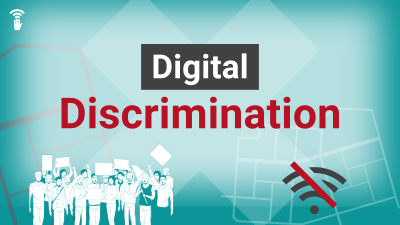
Telecom giants like AT&T routinely deny that they base broadband deployment on race, income, and other widely available demographic data, but the evidence NDIA collected speaks for itself. NDIA found that AT&T routinely failed to upgrade aging DSL lines in an overwhelming majority of blocks with individual poverty rates above 35%—despite decades of heavy subsidies, regulatory favors, and massive tax breaks.
The organization found similar evidence of digital redlining in cities like Cleveland, Dayton, Detroit, and Toledo. Federal regulators have been slow to tackle both monopoly power and “digital discrimination,” though the NTIA this week urged the FCC to adopt meaningful safeguards preventing broadband providers from engaging in strategic deployment discrimination.
“[Residents] pay too much because of the all-but-monopoly here,” Davis told ILSR. “It takes market-rate competition to drive those costs down. We need fiber—lots of it, everywhere—to stay relevant economically in the 21st century.”
Bridging The Digital Divide, Defeating Goliath
Cleveland officials say they were inspired by Chattanooga, Tennessee’s utility-owned municipal fiber network, which has brought that city a $2.7 billion return-on-investment. Unlike Chattanooga, SiFi and CircleC, not the city, will own the finished networks. With little to no taxpayer money being spent, it’s a tradeoff city leaders say they felt made sense.
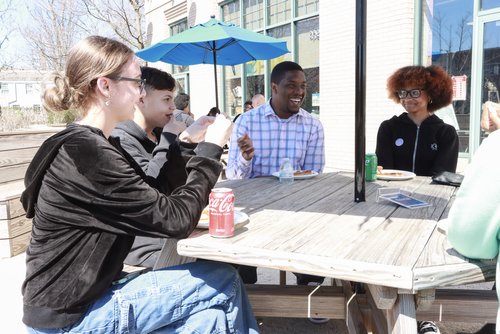
“They already have a right to use our right of way—we’re not providing any special access to it, the agreement is just us all getting organized for how permitting for such a large scale project will go,” Davis said of the SiFi partnership. “Since the city’s paying for it or putting anything in, it’s not getting an equity stake.”
Similarly, Davis noted that DigitalC will also maintain ownership of their finished wireless network.
“We at the City are not contracting for infrastructure,” Davis noted. “We’re contracting for DigitalC to take 23,500 households–about 50,000 residents–that don’t subscribe to at-home broadband today and get them to become at-home internet subscribers, and provide digital adoption services and training to 50,000 residents. Basically, we’re paying to halve our present unconnected rate of 32 percent.”
The double-pronged project faced no limit of opposition from companies like Charter (Spectrum) opposed to the sudden influx of competition. But despite the company’s best efforts to undermine the project in the eyes of city council, Edmonds noted that a dedicated coalition of equity advocates and reformers were able to finally enact meaningful change.
“My desire is people get active in their respective communities, and they demand better,” Edmonds said. “Because better is absolutely possible. We know we have a lot to prove, but we also know that we've been able to do what many say was seemingly impossible by not just defeating one Goliath, but two.”
Last year, ILSR’s Christopher Mitchell sat down with Angela Thi Bennett, DigitalC’s Director of Advocacy & Impact, for Episode 499 of the Community Broadband Bits Podcast.
Watch a short video on Digital C's business model below:
*This story was updated to clarify that the arrangment with SiFi is not what we consider to be a public-private partnership.
Header and inline images courtesy of Digital C
Inline graphic image of digital discrimination courtesy of the National Digital Inclusion Alliance
